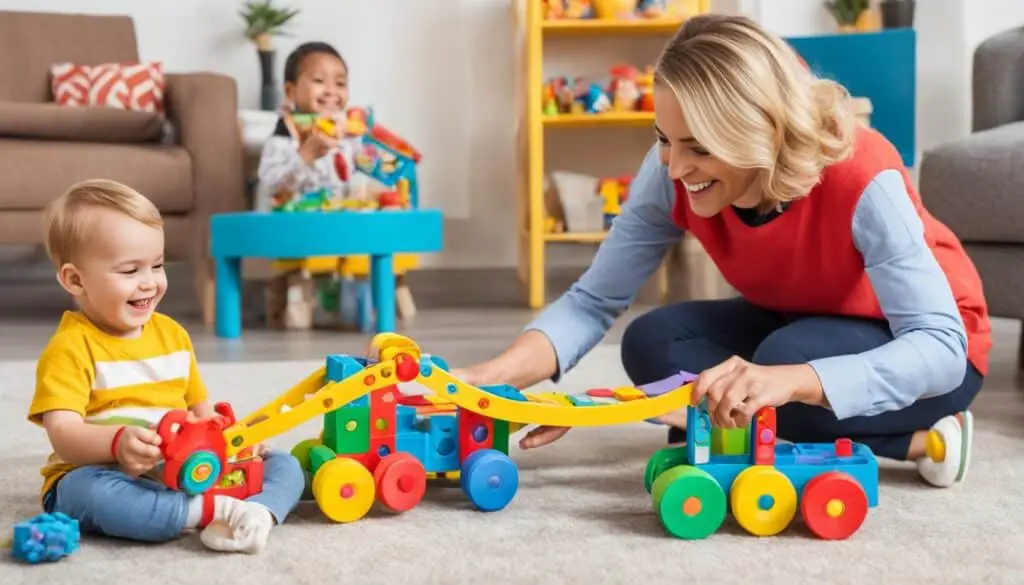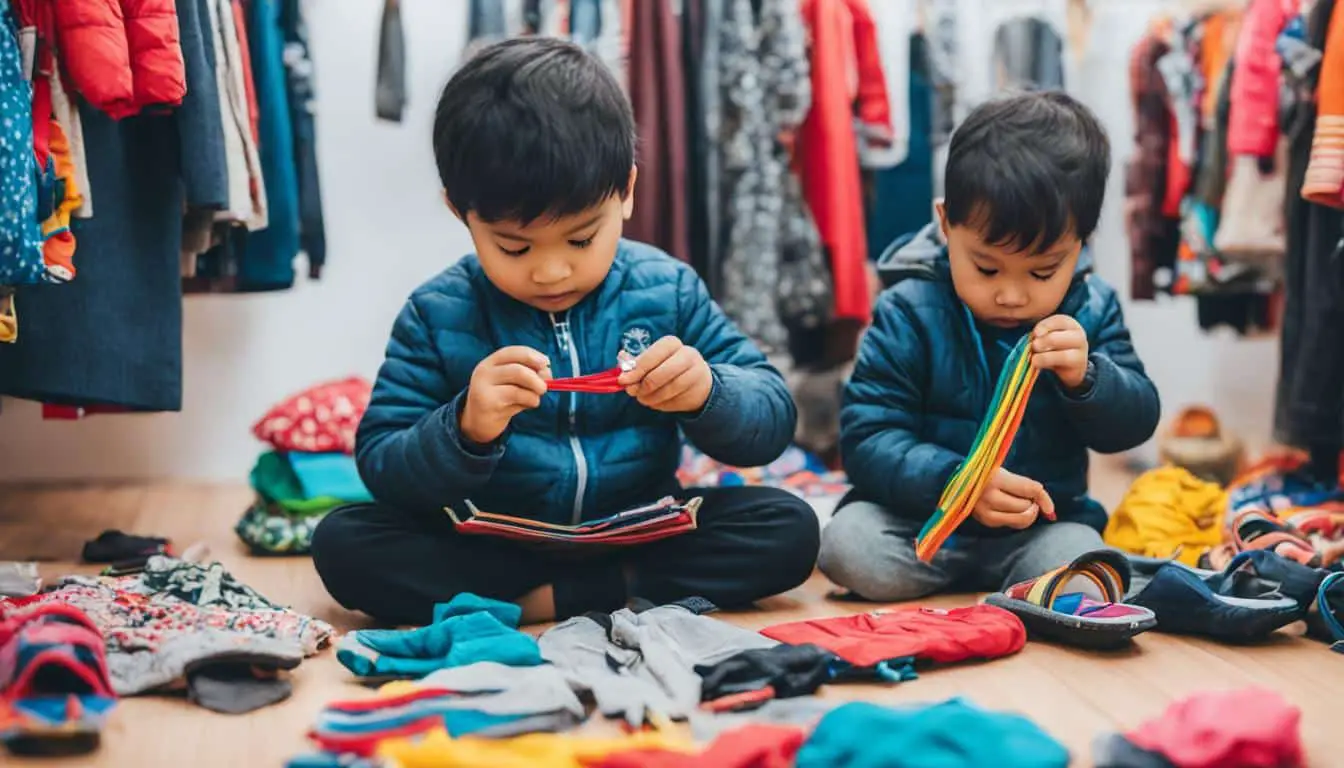Understanding Gender Identity Development in Children
As a copywriting journalist, I understand the importance of providing accurate information to my readers. In this article, I will be discussing the topic of gender identity development in children. It is crucial to understand this aspect of child development, as it has significant implications in how a child perceives themselves and interacts with others.
Gender identity development in children refers to the process through which children come to understand and define their gender. This process starts at a young age and is shaped by various factors, including biological, psychological, and social factors.
In this article, we will explore the different factors that contribute to gender identity development in children and discuss how parents, caregivers, and professionals can create supportive environments. We will also provide resources and strategies for supporting children in their gender identity exploration.
Key Takeaways:
- Gender identity development is a critical aspect of child development
- This process is shaped by biological, psychological, and social factors
- Creating a supportive environment is essential for a child’s gender identity exploration
- Parents, caregivers, and professionals play a crucial role in supporting a child’s gender identity development
- There are resources and strategies available for supporting a child’s gender identity exploration
The Role of Socialization in Gender Identity Development
As children begin to navigate their world, they are continuously bombarded with messages about how they should behave and what is expected of them. These messages, which are often conveyed through various forms of socialization, play a significant role in shaping a child’s understanding of their gender identity.
From a young age, children are exposed to societal expectations and gender stereotypes that influence their behavior and shape their gender identity formation. For example, boys are often encouraged to be assertive and competitive, while girls are taught to be nurturing and cooperative. These messages are reinforced in various ways, such as through media, peers, and family members.
The impact of socialization on gender identity development can be seen in the ways that children conform to or challenge gender norms. Children who conform to societal expectations may feel pressure to suppress certain aspects of their identity, while those who deviate from gender norms may face stigma and social ostracism.
It is important to be mindful of the ways in which socialization can shape a child’s gender identity and to actively challenge gender stereotypes in order to create a more inclusive and supportive environment for all children.
Parents, caregivers, and educators can play a significant role in promoting healthy gender identity development by creating environments that allow for exploration and self-expression. This can involve challenging gender norms, providing positive role models, and encouraging open communication about gender identity.
The Impact of Media on Gender Stereotypes
| Type of Media | Examples of Gender Stereotypes |
|---|---|
| TV Shows and Movies | Male characters are typically portrayed as strong, independent, and powerful, while female characters are often shown as weak, emotional, and submissive. |
| Advertising | Women are often sexualized and portrayed as objects of desire, while men are presented as dominant and in control. |
| Toys and Games | Boys’ toys are often associated with violence and aggression, while girls’ toys are typically associated with nurturing and caretaking. |
It is important to be aware of the impact that media can have on shaping children’s perceptions of gender roles and stereotypes. By promoting more diverse and inclusive media content, parents and caregivers can help to create a more supportive environment for gender identity exploration and development.
Signs and Factors Influencing Gender Identity Exploration in Childhood
Gender identity exploration is a process of self-discovery in which a child gains deeper insights into their gender identity. Some signs that may indicate gender identity exploration include expressing a desire to dress or behave in a way that doesn’t conform to traditional gender norms (gender nonconformity), showing a preference for toys or playmates typically associated with the opposite gender, and expressing a desire to be identified as a different gender.
The factors that influence gender identity exploration are complex and multifaceted. One critical factor is the presence of supportive environments that provide children with opportunities to express and explore their gender identities freely. Supportive environments can create a sense of safety and validation for the child and encourage them to embrace their identity.
Gender nonconformity is also a significant factor that can influence gender identity exploration. Children who deviate from traditional gender norms may feel more comfortable questioning and exploring their gender identity. It is essential to recognize that gender nonconformity does not necessarily indicate that a child is transgender, but it is crucial to validate and support their exploration regardless of their ultimate gender identity.
An unsupportive environment that reinforces rigid gender stereotypes can hinder a child’s gender identity exploration. Such an environment can make a child feel ashamed or afraid of their gender identity, leading to negative emotional outcomes. Providing acceptance, validation, and support can make all the difference to a child’s mental health and well-being.
“Supportive environments can create a sense of safety and validation for the child and encourage them to embrace their identity.”

Factors Influencing Gender Identity Exploration
| Factors | Description |
|---|---|
| Supportive Environments | Physical and psychological spaces that foster emotional and mental well-being and validate a child’s gender expression |
| Gender Nonconformity | Expressions of gender that do not conform to traditional gender roles or expectations |
| Unsupportive Environments | Physical and psychological spaces that reinforce rigid gender stereotypes and discourage gender exploration |
Responding to Gender Identity Development in Children
Supporting and affirming a child’s gender identity is crucial for their emotional, social, and cognitive development. As a parent, caregiver, or professional, there are several approaches that can help you provide guidance and support during this process.
- Listen and Validate: Encourage open and honest communication, and validate the child’s experiences and feelings.
- Positive Reinforcement: Offer praise and positive feedback for behaviors that align with the child’s gender identity.
- Gender-Affirming Environments: Create environments that support the child’s gender identity, such as providing gender-affirming clothing and gender-neutral restrooms.
- Professional Guidance: Seek support and guidance from professionals, such as pediatricians, therapists, and educators, who are knowledgeable about gender identity development in children.
It is important to note that every child’s journey is unique, and there is no one-size-fits-all solution. However, by providing supportive and affirming environments, listening and validating their experiences, and seeking professional guidance when necessary, we can help children explore and embrace their gender identity with confidence and self-assurance.

Conclusion
Understanding gender identity development in children is crucial to promoting their well-being and fostering supportive environments that enable them to develop a strong sense of self. As a journalist, I have gained valuable insights into the factors that influence gender identity formation, including socialization and societal expectations.
It is essential to recognize that gender identity exploration is a natural part of the child development process. As such, it is crucial to provide children with the support and guidance they need to understand and embrace their gender identities fully.
As parents, caregivers, and professionals, we must create safe, non-judgmental environments that enable children to explore and express their gender identities freely. This involves using affirming language, providing access to gender-neutral spaces and activities, and supporting children in their gender expression.
In conclusion, understanding children’s gender identity development is vital to fostering supportive environments that encourage them to explore, express, and embrace their gender identities fully. As a journalist, I hope to raise awareness and promote acceptance of gender diversity, enabling all children to live happy and fulfilling lives.
FAQ
What is gender identity development in children?
Gender identity development in children refers to the process by which children develop a sense of their own gender identity, which may be different from their assigned sex at birth. It involves their understanding and internalization of their gender, whether they identify as male, female, both, neither, or another gender entirely.
How does socialization influence gender identity development in children?
Socialization plays a significant role in shaping children’s gender identity. Society’s expectations, cultural norms, and gender stereotypes can influence how children perceive and construct their own gender identity. These influences can come from family, peers, media, and the broader social environment.
What are some signs and factors that influence gender identity exploration in childhood?
Gender identity exploration in childhood can manifest in various ways. Some signs include a child expressing a strong preference for toys, clothes, or activities typically associated with a different gender, or expressing discomfort with their assigned gender. Factors that can influence gender identity exploration include exposure to diverse gender roles, supportive environments, and acceptance from family and friends.
How can we respond to gender identity development in children?
Responding to gender identity development in children requires a supportive and affirming approach. It is important for parents, caregivers, and professionals to listen to and validate a child’s gender identity. This may involve providing resources, access to supportive communities, and professional guidance if needed. Creating an environment that respects and celebrates diverse gender identities is crucial for a child’s well-being.
What is the importance of understanding gender identity development in children?
Understanding gender identity development in children is vital for fostering inclusive and supportive environments. By recognizing and respecting a child’s gender identity, we can help promote their overall well-being, self-esteem, and mental health. It also ensures that children feel safe and empowered to explore and express their gender identities authentically.






